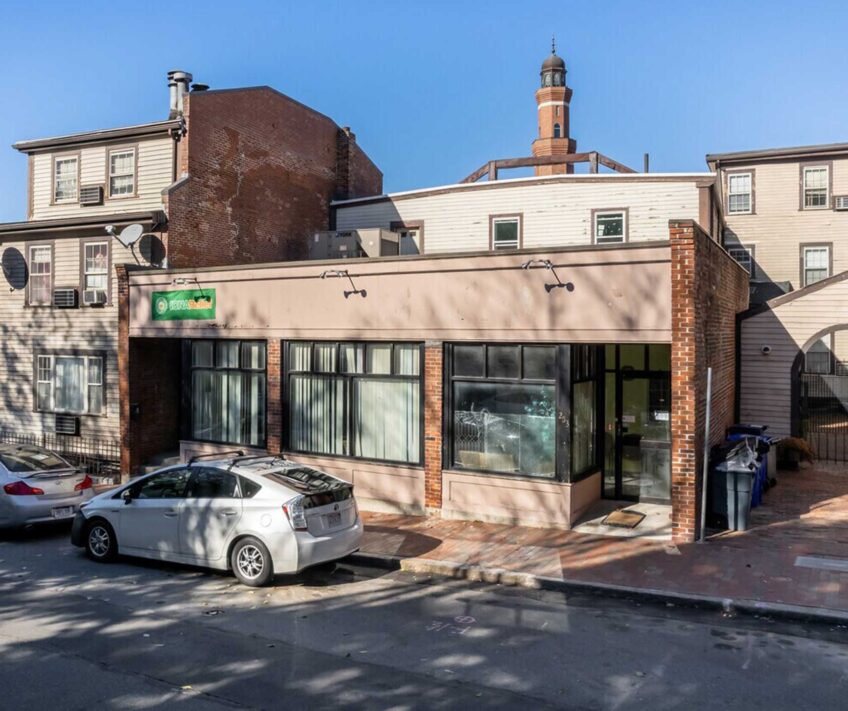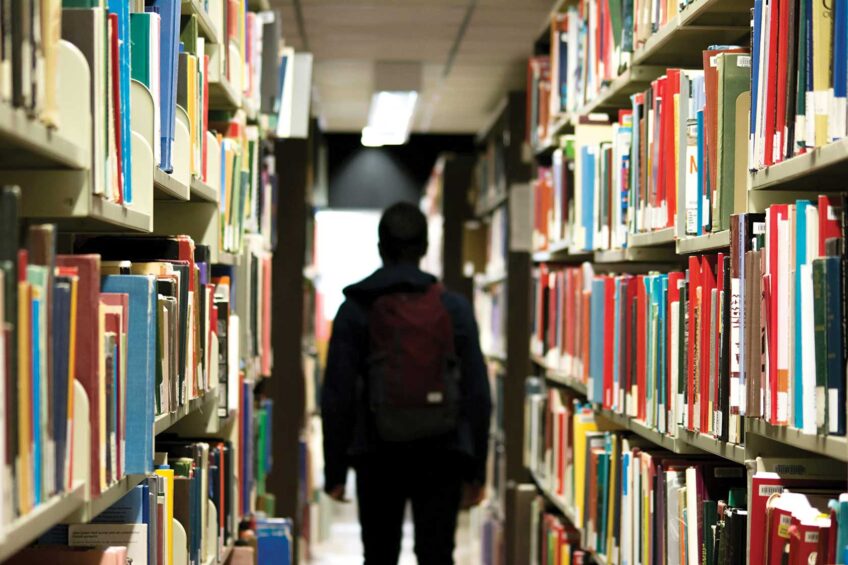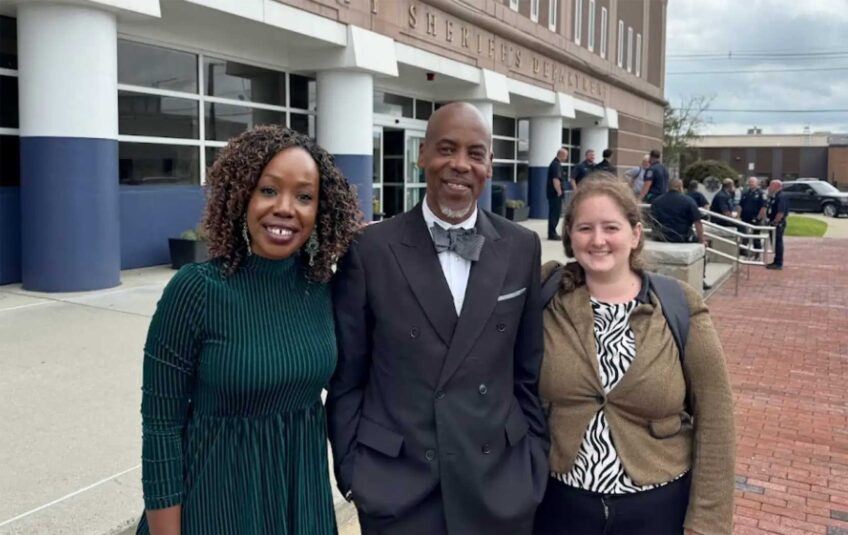
Two bills at the State House would take steps to monitor and improve air quality in the areas most affected by pollution.
The legislation was highlighted at a briefing for elected officials, March 27, where advocates said the effort is of particular importance in light of federal efforts rolling back air quality and environmental justice protections.
“This is a problem impacting people’s lives and there are tangible solutions,” said Paulina Muratore, director of transportation justice and infrastructure with the Conservation Law Foundation.
Of the two bills, one targets outdoor air quality, the other looks to tackle indoor air pollution.
The outdoor air quality bill would create an advisory committee to identify pollution hotspots and increase air quality monitoring. It would also set targets to reduce pollution levels by 50% by 2050 and 75% by 2035 and require high-efficiency air filtration in certain buildings — like schools, public housing and jails — near major pollution sources.
The indoor air quality bill would create a task force to develop guidelines for addressing indoor air pollution and would require the Department of Public Health and Department of Environmental Protection to create regulations for indoor air quality assessments. The legislation would focus on schools and child care centers, as well as nursing homes and public housing.
Supporters said both pieces of legislation would help to protect the communities that bear the brunt of pollution and its health effects.
“It’s a step toward making sure that some of our most vulnerable populations do not face and are not victims of air pollutants that can really affect their health,” said Rep. Judith Garcia, who represents Chelsea and is a lead sponsor of the indoor air quality bill.
And, as the state government goes through its process to develop its budget for the next fiscal year — Gov. Maura Healey submitted her proposal in January and it’s now under consideration by the House of Representatives — advocates at the briefing also called for $5 million in funding for the Massachusetts Healthy Homes Program. That program, established under last year’s Affordable Homes Act, a $5.16 billion bond bill aimed at countering rising housing costs, allows the state to fund efforts by homeowners or landlords to address habitability issues, including lead, asbestos and mold.
Healey’s proposal did not include any funding for the program — the Executive Office of Housing and Livable Communities, which was tasked with creating the guidelines for the program finished them after the proposal was submitted.
Funding that work is an important step for bringing better health in reach for residents across the state, regardless of income, said Rep. Manny Cruz, who represents Salem.
“The reality is that if we’re ever going to make Massachusetts a more affordable place to live, a healthier place to live, then we need to commit ourselves to ensuring that we have budgets that reflect our values,” Cruz said. “Quite frankly, clean air, a healthy home — these are human rights. This is about basic human dignity.”
Aneida Molina, who works with the Revitalize Community Development Corporation in Springfield doing “healthy homes” work said the community development corporation knows how to help residents but needs increased support to broaden the reach of those supports.

Rep. Judith Garcia (left), who represents Chelsea, and Rep. Samantha Montaño, who represents Roxbury, Mission Hill and Jamaica Plain, speak in support of a bill that would create measures to improve indoor air quality at a legislative briefing at the State House, March 27. Support for the bill was one of three asks from advocates and supporters, alongside another bill focused on outdoor air quality, and a $5 million budget line item to support the new Massachusetts Health Homes Program, which would provide grants and loans to property owners to address issues like asbestos, mold, pests and lead. PHOTO: AVERY BLEICHFELD/BAY STATE BANNER
Revitalize is part of the Springfield Healthy Homes Collaborative, which has been doing work with remediation and education since 2014.
“Revitalize’s work is crucial and improves community health outcomes but is only able to address this on a local scale,” Molina said. “We know what works and we need the resources to do it statewide.”
A 2022 study by Boston College researchers found that, in 2019, air pollution was responsible for over 15,000 of pediatric asthma and caused almost 2,800 deaths, through effects like lung cancer, heart disease and stroke.
And communities of color tend to bear the brunt of poor air quality and the health impacts that come with it. According to the American Lung Association’s 2020 State of the Air report, when the association graded counties across the United States on three different measures around particulate and ozone pollution, about 74 million people of color lived in counties with at least one failing grade and 14 million lived in counties with failing grades for all three.
“The impacts of pollution, both indoor and outdoor, on public health — particularly in public housing, schools and other places where people gather — is pressing concern, and it’s the same people who are being scooped off our streets by ICE who are breathing polluted air and dying in their homes,” said Sofia Owen, senior attorney at the Roxbury-based Alternatives for Community and Environment.
Both bills have been filed in previous sessions, but Muratore said the legislation is especially important under the new administration of President Donald Trump.
Since Trump took office in January, his administration has taken steps to roll back climate policies that target pollution from vehicles and power plants. In early March, the State Department announced it would be shutting down its worldwide air quality monitoring program. And within weeks of the start of his second term, environmental resources and datasets — including air quality data — started being pulled from federal websites, prompting outside groups to hurry to archive what they can. The removal of data and language focused on climate change was an action Trump took in his first administration as well.
That leaves Massachusetts in a place to take action, Muratore said.
“This is not the moment for Massachusetts to back down,” she said. “I think this is the moment that Massachusetts really needs to step up.”
She said she thinks the content of both the bills is feasible for Massachusetts to tackle without federal input.
The bills would also close gaps in existing laws and regulations, said Kevin Shen, a transportation policy analyst with the Union of Concerned Scientists. Currently, the federal Clean Air Act doesn’t set any limits for indoor air quality, and the guidelines set by the Environmental Protection Agency are nonbinding.
“Much more is needed at the state level to make sure to protect the people of Massachusetts,” he said.






